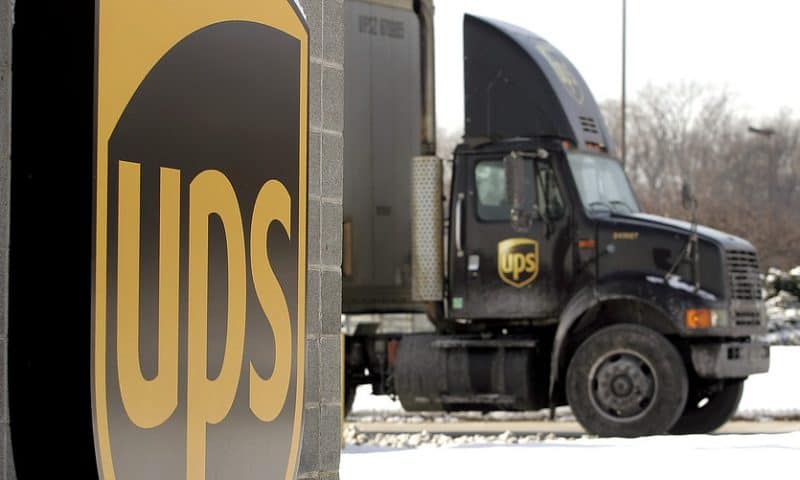‘Biggest driver of profitability for the industry is drop density, which is significantly lower for residential deliveries than business,’ says BMO
United Parcel Services Inc. stock slid Wednesday, after BMO downgraded the stock and said the rise of e-commerce is disrupting the delivery business as more parcels go to residential addresses than businesses, squeezing profit for the incumbents.
UPS shares UPS, -1.48% were down 1.4% in afternoon trade, bringing their month-to-date loss to more than 5%.
BMO downgraded the stock to market perform from outperform and lowered its stock price target to $123 from $125. In an accompanying note, the bank analyzed the supply chain and carried out a deep dive into future technologies and business models for last-mile delivery.
“Rising e-commerce volumes are increasingly becoming the dominant share of small package delivery volumes, pressuring operating margins and ROICs (return on invested capital) for related companies,” analysts led by Fadi Chamoun wrote in the report. “The biggest driver of profitability for the industry is drop density, which is significantly lower for residential deliveries than for business deliveries, and we see no reasonable path toward improving B2C (business-to-consumer) drop density.”
The incumbent delivery companies, which include FedEx Corp. FDX, +1.32% and the U.S. Postal Service, have built big networks that are based on efficiently delivering business-to-business. Profitability in the last mile depends on drop density and route density, both of which are at risk as business-to-consumer volumes are expected to grow to account for more than 70% of total delivery volumes by 2026.
The power wielded by Amazon.com Inc. AMZN, +0.55% and other leading online retailers is another competitive threat that is expected to keep pressure on pricing. Those companies have steadily narrowed the delivery window with two-days or next-day swiftly becoming the industry standard. Consumers expect faster deliveries and customization, which means more orders picks, smaller pick size and more frequent shipments.
“We believe that small package delivery incumbents will need to spend aggressively on technology to reduce their cost structure, but these efforts will likely be insufficient to maintain industry profitability at 2018 levels in the absence of significant improvement to pricing,” the analysts wrote.
Last-mile costs can account for 50% to 60% of total freight costs and the last mile also offers a strategic advantage, in the form of a point of contact with a customer that can ensure satisfaction.
“Large hub-and-spoke networks that have been built to expedite city-to-city transportation of time-sensitive business parcels are no longer as effective when moving B2C volumes, which require distribution centers and sortation centers located close to the urban core,” said the report.
There’s a lot at stake.
The global market for transporting and delivering goods was worth about $3 trillion in 2018, the report found. There were 16.63 billion packages delivered in the U.S. in 2019, with UPS, FedEx and USPS accounting for 81.3% of volume. UPS has the highest margins in the small package delivery space, thanks to disciplined pricing and a focus on operations management and capital efficiency.
“UPS has historically prioritized pricing over volume, which has allowed it to maintain such a strong ROIC relative to the competition,” said BMO. The company operates a single integrated network unlike FedEx which operates both an Express and Ground network. FedEx lags UPS in driver productivity, measured by packages per driver, by as much as 65%, because of their different setups.
UPS is expected to benefit from strong volumes and efficiency gains in the near term, but the longer-term challenge will be to improve operating margins in the U.S. and international markets. Free cash flow is likely to be hurt by the need to maintain capital spending.
UPS shares have gained about 20% in 2019, while FedEx has fallen 2%. The S&P 500 SPX, +0.29% has gained 25% and the Dow Jones Industrial Average DJIA, +0.11% has gained 20%.

